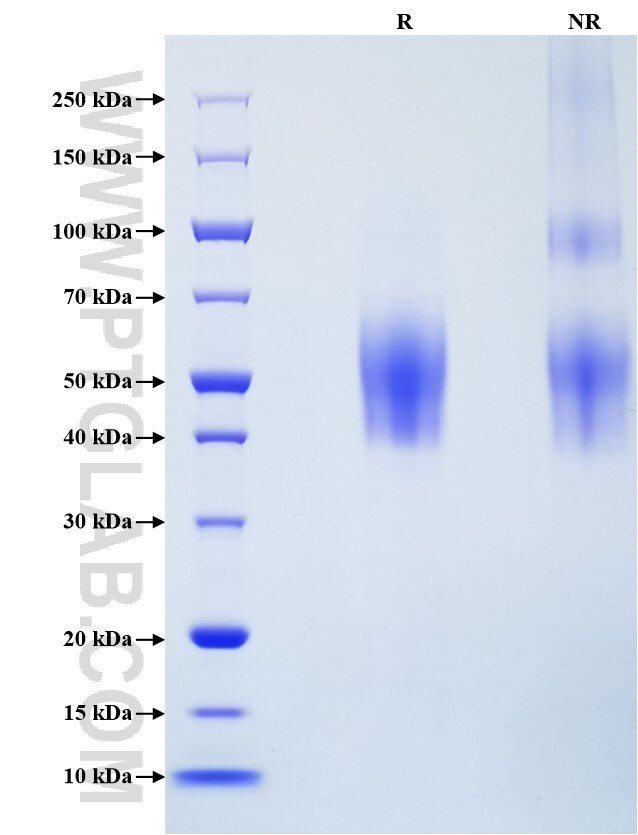Recombinant Human CD226 protein (Myc Tag, His Tag)
Species
Human
Purity
>90 %, SDS-PAGE
Tag
Myc Tag, His Tag
Activity
not tested
Cat no : Eg0027
Validation Data Gallery
Product Information
| Purity | >90 %, SDS-PAGE |
| Endotoxin | <0.1 EU/μg protein, LAL method |
| Activity |
Not tested |
| Expression | HEK293-derived Human CD226 protein Glu19-Asn247 (Accession# Q15762) with a Myc tag and a His tag at the C-terminus. |
| GeneID | 10666 |
| Accession | Q15762 |
| PredictedSize | 31.3 kDa |
| SDS-PAGE | 40-65 kDa, reducing (R) conditions |
| Formulation | Lyophilized from 0.22 μm filtered solution in PBS, pH 7.4. Normally 5% trehalose and 5% mannitol are added as protectants before lyophilization. |
| Reconstitution | Briefly centrifuge the tube before opening. Reconstitute at 0.1-0.5 mg/mL in sterile water. |
| Storage Conditions |
It is recommended that the protein be aliquoted for optimal storage. Avoid repeated freeze-thaw cycles.
|
| Shipping | The product is shipped at ambient temperature. Upon receipt, store it immediately at the recommended temperature. |
Background
CD226 (DNAM-1) is a ~65 kDa glycoprotein expressed on the surface of NK cells, platelets, monocytes and a subset of T cells. It is a member of the Ig-superfamily containing 2 Ig-like domains of the V-set. CD226 mediates cellular adhesion of platelets and megakaryocytic cells to vascular endothelial cells. The protein also plays a role in megakaryocytic cell maturation. Interactions of CD226 and its ligands, CD155 and CD112, induce NK and T cell-mediated cytotoxicity and cytokine secretion.
References:
1.A Shibuya, et al. (1996) Immunity. 4(6):573-81. 2.Cristina Bottino, et al. (2003) J Exp Med. 198(4):557-67. 3.Hiroshi Kojima, et al. (2003) J Biol Chem. 278(38):36748-53. 4.Satoko Tahara-Hanaoka, et al. (2004) Int Immunol. 16(4):533-8.

